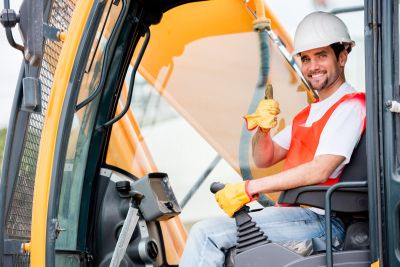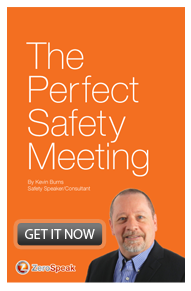3 Reasons Negative Reinforcement Hurts Safety
Organizations that align themselves with negative messaging struggle to improve their safety results.
 Of course negative reinforcement doesn’t work. But then safety people do just that. You reinforce your safety message negatively without even realizing it. Negative reinforcement does not automatically create safety.
Of course negative reinforcement doesn’t work. But then safety people do just that. You reinforce your safety message negatively without even realizing it. Negative reinforcement does not automatically create safety.
In the last 20 years of studying human behavior, motivation, engagement and safety, I’ve discovered that organizations that align themselves with negative messaging struggle to improve their safety results.
A recent series of off-topic statistics got my attention. The study referred to on-line product reviews.
In the study, 90% of people were swayed by positive reviews about a product. They were swayed enough to purchase the product themselves. Conversely, 86% of on-line shoppers were swayed by negative reviews of a product. They were swayed enough to not purchase the product. Almost 50/50 you would think wouldn’t you? Ah, but not so fast. Consider what the reviews swayed people to do. The positive reviews swayed people to take action and buy. The negative reviews swayed people to take no action and not buy. Negative reviews did nothing to cause people to act. In fact, the negative reviews caused people to stop acting.
How can safety use this information? By studying how safety is promoted. Here is a a list of three reasons that negative reinforcement does not create positive outcomes in safety:
1There is no correlation between negative stories and positive actions. Professional sports teams don’t rally their teams before a championship with stories of failing to win a championship. That would de-motivate. Instead, teams pump each other up positively. They get their game faces on and increase their intensity and singular focus. There is no talk of doubt, missed opportunity, mistakes or avoiding hazards. There is only a “we can do this” attitude. When you want a championship team effort, don’t take their focus off of winning or allow doubt and error to enter the locker room. You, instead, focus on the prize and remove all excuses and doubt.
2“Don’t” is not a complete set of instructions. Any suggestion that employs the words don’t, stop or never will not draw a straight line to an actionable step. Telling a dieter “don’t have the chocolate cake” is not a complete instruction. Your instructions will fail because they are missing actionable steps. No one ever enters a grocery store with a list of what not to buy. They go with a list of exactly what to buy. People trying to change their results need specific instructions. Dieters are encouraged to work the program; to attend the meetings and find a diet sponsor/buddy. They talk out their cravings and embark on new lifestyle choices like exercise and yoga. They take on new activities to keep busy. In safety, don’t get hurt is not a complete instruction. Neither is stop doing unsafe things. What things specifically? And what actions do you want them to take … specifically? Give them a plan.
3It takes six positive words to overcome one negative word. People do not perform well in a negative environment. The overuse of negative chastising, criticisms and hyperbole do not motivate employees. In fact, research shows that the more negative words are used, the poorer teams perform. People do not automatically see the bright side of negative comments. Criticize performance and there is no automatic reversal of action. Criticize continuously and people de-motivate. Their love for the job and for safely doing the job vanishes. Relationships suffer too. A boss who offers nothing but negative feedback creates a chasm between boss and employee. It will take a lot of positive words to overcome a negative environment.
So what can be done to improve positive working environments and positive safety performance? Do these three things starting today:
- Scour your workplace looking for anything that could be interpreted as negative. Look for posters with cuts or injury. Remove anything with the words don’t, never or stop in them. And remove PowerPoint slides from your deck that focus on mistakes/failures instead of success.
- Find better ways to show positive growth. Good coaches find ways to tweak performance one small step at a time. Positive reinforcement pushes better performance. Use positive words to build positive engagement. Study every word you use. Is it positive or negative?
- Stick to safety. If you want your people to be better in safety, expose them to good safety behaviors - not messages and stories of injury. Safety is not the absence of injury. Focus beyond mere compliance. Find ways to talk about positive safety and in a way that others want to be part of it.
 The benefits of doing safety well are positive. The feeling of creating a championship team of high performers is positive. Solid teamwork is positive. Leadership is positive. Build your safety program on positive reinforcement and positive performance feedback. It’s easier than you think.
The benefits of doing safety well are positive. The feeling of creating a championship team of high performers is positive. Solid teamwork is positive. Leadership is positive. Build your safety program on positive reinforcement and positive performance feedback. It’s easier than you think.
For more information on being positive, specifically in safety meetings, view Chapter 5 in my book The Perfect Safety Meeting. Or order a paperback copy from Amazon.
Kevin Burns is a management consultant, safety speaker and author of "The Perfect Safety Meeting" and his newest #1 Amazon Health & Safety Bestseller, "Running With Scissors - 10 Reasons To Invest in Safety In Slow Times." He is an expert in how to get through to people - how to talk with them so they hear and understand. Kevin's presentation "Trust The Process - Instill A Safety Attitude To Build An Engaged Culture Of Safety" will help your organization reach the following goals: better engagement and buy-in to safety, increased teamwork, better communication, lower turnover resulting in increased profits from production. Click here for more information and to discuss your needs with Kevin.



